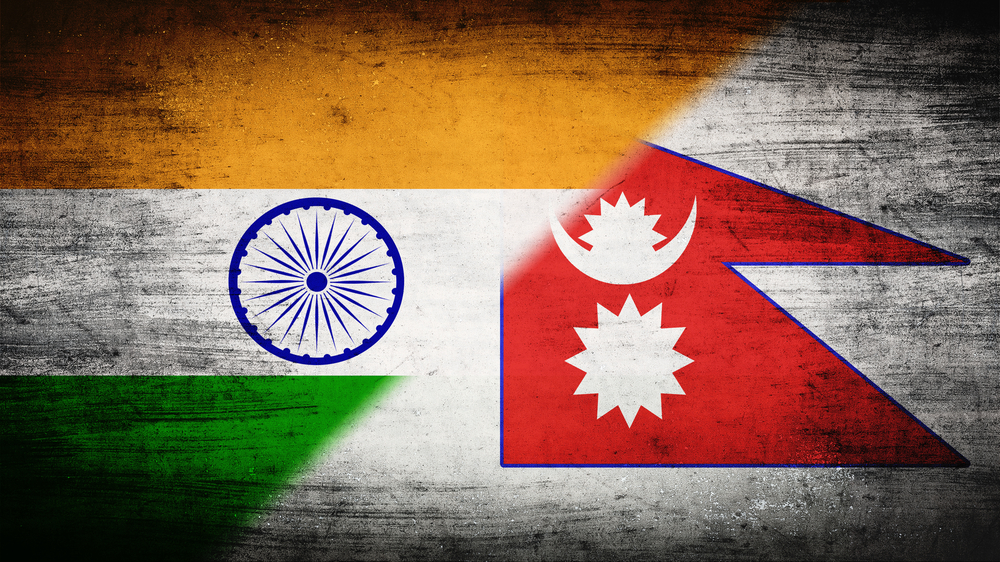Bilateral, Regional and Global Groupings and Agreements involving India and/or affecting India’s interests; Effect of Policies and Politics of Developed and Developing Countries on India’s interests, Indian Diaspora
Relations between India and Nepal have experienced significant turbulence since 2015. In the light of this statement, discuss the possible steps that could be implemented to enhance their mutual relationship.
Since 2015, geopolitical pressures and internal political factors have caused major volatility in relations between India and Nepal. There are still lingering effects from the new constitution that Nepal adopted, the economic embargo imposed by India, and the ensuing diplomatic tensions. There is a fresh chance to normalize bilateral relations now that Khadga Prasad Oli and Narendra Modi are in charge of their respective nations.
Existing Issues:
Political Conflicts and Economic Blockade (2015): The creation of Nepal’s updated constitution in 2015, which India felt needed modifications to accommodate the Madhesi community’s demands, triggered intense political conflicts. The situation worsened when India was blamed for backing a blockade that resulted in serious economic and humanitarian emergencies in Nepal.
Shifts in Geopolitical Landscape and China’s Role: In reaction to the blockade and India’s perceived aggressive behavior, Nepal entered into numerous deals with China regarding commerce, transit, energy, and transportation. This move towards Beijing has been a major source of disagreement, as India harbors concerns about China’s increasing sway over Nepal.
Territorial Conflicts: In 2019, India unveiled a revised political map that encompassed disputed areas like Kalapani, Lipulekh, and Limpiyadhura. This move was met with a strong response from Nepal, which revised its constitution to claim these areas as its own, escalating tensions further. The issue of these territorial conflicts has yet to be settled and continues to be a point of contention.
Economic and Growth Collaboration: India has participated in numerous major initiatives in Nepal, such as the development of hydropower facilities and the construction of infrastructure across borders. There have been agreements on the exchange of electricity and the development of infrastructure, showing forward-thinking stance towards economic unity.
Cultural and Social Connections: The unrestricted border between India and Nepal has fostered strong cultural and familial connections. Yet, there are obstacles such as the recruitment of Nepali young people into the Indian Army through the Agnipath Scheme, which has sparked concerns in Nepal. Moreover, issues related to trade and movement across the border require careful attention to preserve the positive relationship between the two countries.
Political Involvement and National Sovereignty Issues: India’s engagement in the internal affairs of Nepal has been a point of contention. There have been allegations of political meddling and efforts to sway Nepal’s governance, leading to a sense of resentment. Nepalese authorities have often had to find a balance between the desire for collaboration and the need to protect their sovereignty and autonomy in their own internal matters.
Way Forward:
Revive the Peace and Friendship Treaty: It’s essential for both nations to engage together in updating the 1950 Peace and Friendship Treaty to better mirror current realities and foster a mutual understanding and respect. This revision could help to address Nepal’s worries regarding its independence and India’s issues of encroachment.
Working on Settling Border Issues: Set up a cooperative committee to tackle and settle border conflicts, especially in the Kalapani-Limpiyadhura-Lipulekh and Susta areas, through peaceful negotiations and the help of neutral international forces. If needed, India could look to the approach taken in settling the India-Bangladesh boundary disputes as a blueprint for settling land-related conflicts.
Boost Trade and Economic Collaboration: Concentrate on projects that bring benefits to both sides economically, such as hydroelectric projects, commercial exchanges, and infrastructure improvements, to enhance economic connections and lessen reliance on external sources. Projects aimed at increasing financial integration and improving connectivity, like cross-border rail transport and digital payment systems, can also improve the relationship.
Increase Cultural and Educational Interactions: There’s a need to expand cultural, educational, and direct interactions between the citizens of the two countries to build goodwill and mutual comprehension. Initiatives like scholarships, cultural events, and joint research initiatives can help to create a stronger bond and dispel misunderstandings.
Adopting Non-Interference in Internal Affairs: India ought to maintain a supportive stance towards Nepal’s internal affairs, honoring its independence and prioritizing dialogue over political meddling. Adopting this policy, in line with the Panchsheel doctrine, can lead to a more stable and prosperous Nepal, which in turn will benefit both nations.
Both countries must place a high priority on respect for one another and non-interference in order to rebuild ties between India and Nepal and develop an equal and cooperative partnership. India and Nepal can create the conditions for a peaceful and successful future for both countries by resolving historical grievances and concentrating on common economic and geopolitical objectives.
Reference: https://www.thehindu.com/opinion/lead/big-brother-to-brother-a-nepal-india-reset/article68407507.ece

